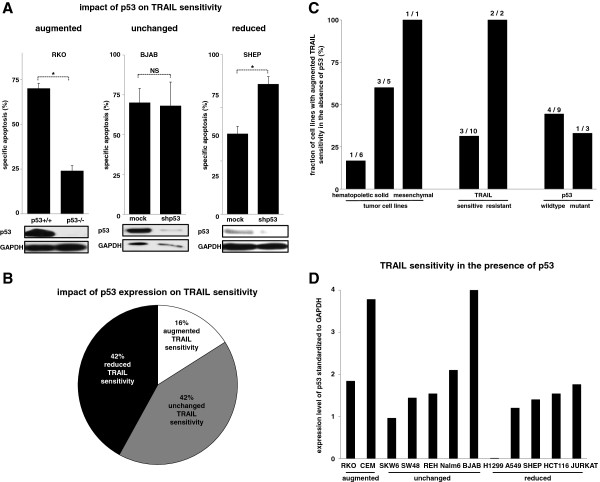Figure 3.
The heterogenous impact of p53 on extrinsic cell death induction in tumor cell lines. A) Parental RKO cells and derivative cells with somatic knockout of p53 (left panel) and BJAB (central panel) and SHEP (right panel) cells stably transfected with shRNA against p53 or a mock sequence were stimulated with TRAIL as in Figure 1A. The impact of baseline p53 expression on extrinsic cell death induction was classified as augmented cell death whenever the presence of p53 was associated with increased TRAIL sensitivity (left panel), as unchanged whenever p53 did not impact cell death by TRAIL (central panel) and as reduced when the presence of p53 diminished apoptosis induction by TRAIL (right panel). B) n = 12 different tumor cell lines from Figure 3A and Additional file 1: Figure S3 were classified according to their response to extrinsic cell death induction in dependence of the p53 status. C) Tumor cell lines from Figure 3B were categorized in the context of the tumor type, the TRAIL response of the p53 expressing cells and the p53 status of the tumor cells. TRAIL resistance was defined as cell death induction < 10%. D) The n = 12 cell lines from Figure 3B were analyzed for the relative p53 content as in Additional file 1: Figure S4. Samples were arranged separated for their TRAIL response in the presence of p53. Apoptosis induction in hematopoietic cells was determined by forwardside scatter analysis, in solid tumor cells using Nicoletti staining. Calculation of specific apoptosis, presentation of data and Western Blot analysis were performed as in Figures 1 and 2. Statistical analysis was performed using paired t-test. *p < 0,05, NS = statistically not significant.

